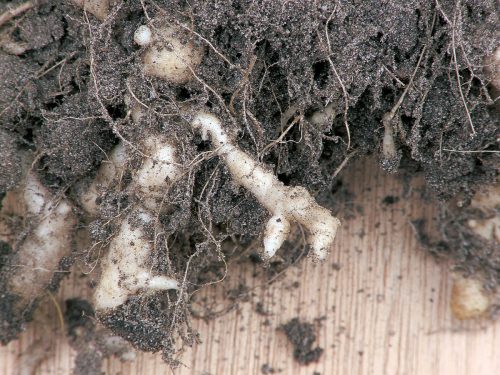Clubroot is a parasite of crucifers, whose spores can survive in the soil for 10 to 15 years.

Clubroot (Plasmodiophora brassicae) is a parasite of crucifers (Brassicaceae), whose spores can survive in the soil for 10 to 15 years. The parasite causes swellings (nodules) on the roots that interfere with moisture and food absorption. The leaves take on a lead-like color after which the crop wilts. The disease spreads through infected soil and affected plant debris.
The parasite thrives in wet, acidic soil.
Where to find
- Crucifers
- Cauliflower
- Kale
- Broccoli
- Kohlrabi
- Radish
- Turnips
- Red cabbage
- Brussels sprouts
- Weeds:
- Shepherd’s purse
- Honesty
- Wallflower
Control
Control is not possible.
Prevention
Control no; preventing yes. Apply ample crop rotation: same crop returns to the same spot after six or eight years instead of the usual four years. Weeds, ornamental plants and green manures include crucifers (shepherd’s purse, wallflower, judas pennywort). Keep it away from the plot with the cabbages. Clubroot resistant vegetable varieties are available.
Do not compost the roots of carrots or radishes and turnips. Throw it in the household waste or burn it.
